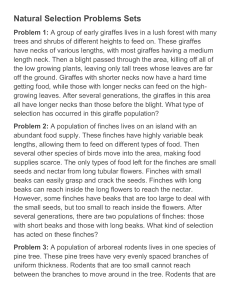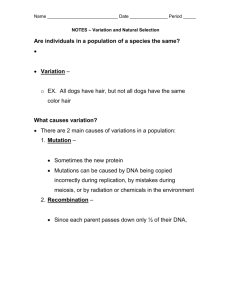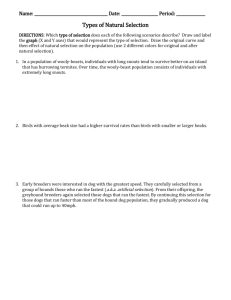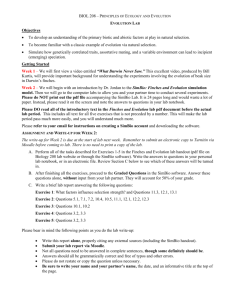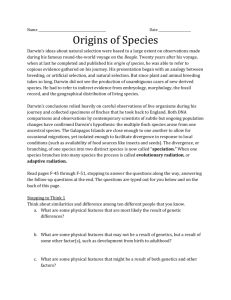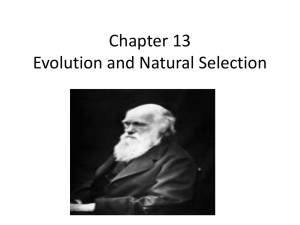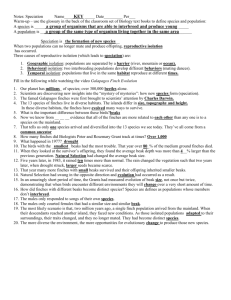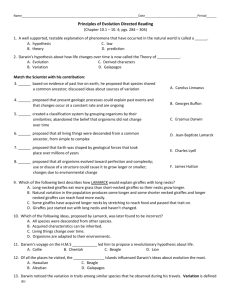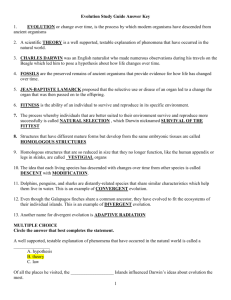Name: Core: _____ ARTIFICIAL SELECTION AND NATURAL
advertisement
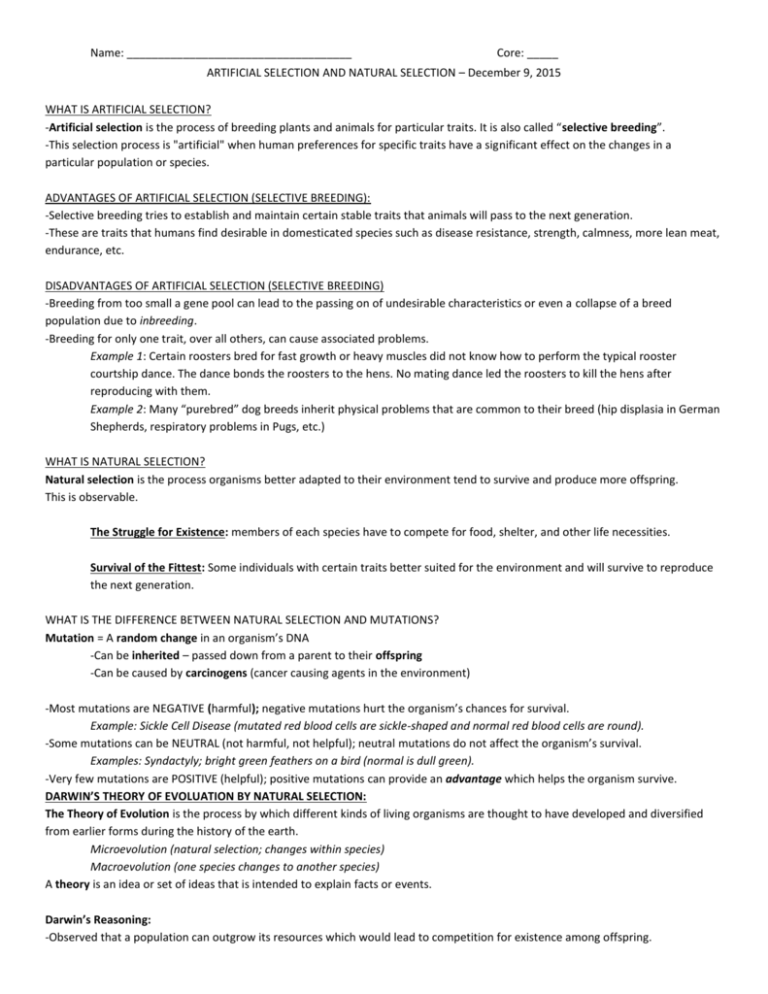
Name: ____________________________________ Core: _____ ARTIFICIAL SELECTION AND NATURAL SELECTION – December 9, 2015 WHAT IS ARTIFICIAL SELECTION? -Artificial selection is the process of breeding plants and animals for particular traits. It is also called “selective breeding”. -This selection process is "artificial" when human preferences for specific traits have a significant effect on the changes in a particular population or species. ADVANTAGES OF ARTIFICIAL SELECTION (SELECTIVE BREEDING): -Selective breeding tries to establish and maintain certain stable traits that animals will pass to the next generation. -These are traits that humans find desirable in domesticated species such as disease resistance, strength, calmness, more lean meat, endurance, etc. DISADVANTAGES OF ARTIFICIAL SELECTION (SELECTIVE BREEDING) -Breeding from too small a gene pool can lead to the passing on of undesirable characteristics or even a collapse of a breed population due to inbreeding. -Breeding for only one trait, over all others, can cause associated problems. Example 1: Certain roosters bred for fast growth or heavy muscles did not know how to perform the typical rooster courtship dance. The dance bonds the roosters to the hens. No mating dance led the roosters to kill the hens after reproducing with them. Example 2: Many “purebred” dog breeds inherit physical problems that are common to their breed (hip displasia in German Shepherds, respiratory problems in Pugs, etc.) WHAT IS NATURAL SELECTION? Natural selection is the process organisms better adapted to their environment tend to survive and produce more offspring. This is observable. The Struggle for Existence: members of each species have to compete for food, shelter, and other life necessities. Survival of the Fittest: Some individuals with certain traits better suited for the environment and will survive to reproduce the next generation. WHAT IS THE DIFFERENCE BETWEEN NATURAL SELECTION AND MUTATIONS? Mutation = A random change in an organism’s DNA -Can be inherited – passed down from a parent to their offspring -Can be caused by carcinogens (cancer causing agents in the environment) -Most mutations are NEGATIVE (harmful); negative mutations hurt the organism’s chances for survival. Example: Sickle Cell Disease (mutated red blood cells are sickle-shaped and normal red blood cells are round). -Some mutations can be NEUTRAL (not harmful, not helpful); neutral mutations do not affect the organism’s survival. Examples: Syndactyly; bright green feathers on a bird (normal is dull green). -Very few mutations are POSITIVE (helpful); positive mutations can provide an advantage which helps the organism survive. DARWIN’S THEORY OF EVOLUATION BY NATURAL SELECTION: The Theory of Evolution is the process by which different kinds of living organisms are thought to have developed and diversified from earlier forms during the history of the earth. Microevolution (natural selection; changes within species) Macroevolution (one species changes to another species) A theory is an idea or set of ideas that is intended to explain facts or events. Darwin’s Reasoning: -Observed that a population can outgrow its resources which would lead to competition for existence among offspring. -Observed that certain variations are more likely to survive and reproduce (“natural selection”). -Assumed that the earth was very old. -Assumed that small changes over time can eventually lead to larger changes over a long enough period of time (one species changes into something different = “evolution”). “GIRAFFE THEORY” = an evolutionary explanation why giraffes have long necks. -Giraffes with longer necks had an advantage. They could reach leaves other giraffes could not. Therefore, the long-necked giraffes were more likely to survive and reproduce (greater fitness). -These giraffes passed the long-neck trait to their offspring. Each generation, the population contained more long-necked giraffes. Eventually, all giraffes had long necks. However… • Female giraffe necks are 2 feet shorter than males. If longer necks were needed to reach above the forage line, then females would have starved to death. • NO EVIDENCE in the fossil record of gradual increase the neck. • Giraffe “adaptational package”: exceptionally large heart (3 x’s man’s heart); blood pressure control; oversized lungs; respiratory rate 1/3 of humans; capillaries are very internal and 1/3 the size of humans. “DARWIN’S FINCHES” – Found on the Galapagos Islands in Ecuador • • • • • Darwin's finches are 13-14 different species of finches living on the Galapagos Islands (considered an icon of evolution). Each island has its own variety of finch, with the most importance difference being the size and shape of their beaks used for different diets and lifestyles. Some had large beaks used for cracking nuts and seeds, while others had slender beaks suited for catching insects etc. The explanation for this given by Darwin was that all the finches on the islands came from one original pair of finches, and that natural selection is responsible for the differences. Because of the variations in the finches he inferred that all species on earth had evolved from this process over billions of years. Current Research on Galapagos Finches: • • • • Researchers are now discovering that organisms can robustly adapt to different ecological niches without major changes in their DNA sequence. A team of Princeton scientists have won a prestigious award for 20 years of study of the finch's beaks. Just what was found? The two scholars, Drs. Peter and Rosemary Grant observed how, under drought conditions, birds with larger beaks were better adapted than others, thus their percentage increased. But this trend reversed when the cyclical conditions reversed. Furthermore, in times of drought, the normally separate species were observed to cross-breed. They are related after all. But is this really evolution? Even after the changes there is still the same array of beak sizes and shapes. This is variation and adaptation, not evolution. Actually, de-evolution has occurred; the observation is that there are larger groupings of species into what may be more reminiscent of the original kind. INTERPRETATION OF THE DATA IS KEY.
